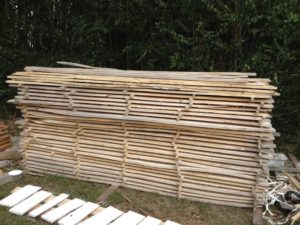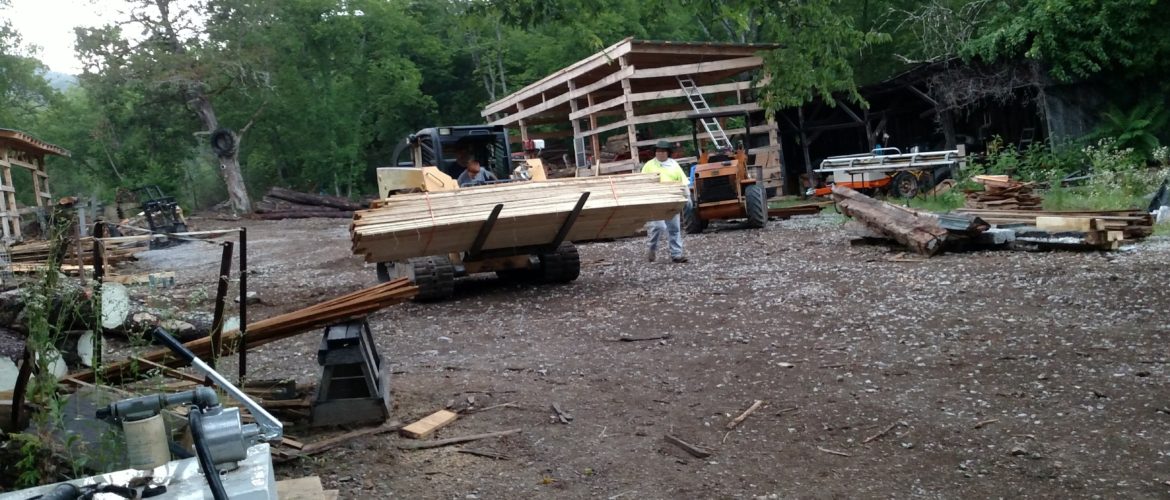I really wanted to use local, natural materials for the wood in my house. Here are some of the things that I learned…
Pros:
- Going to a family-owned sawmill is fun for the whole family! My son is helping drive the forklift with our siding on it.
- You can get uncommon types of wood. We chose poplar lap siding, cedar shakes, and hackberry shiplap.
- The prices, in our case, were better than buying at the home improvement store.
- This wood is not kiln-dried (aka dead and dried up). It is still alive; and when you put a screw or nail into it, it will try to heal itself, thus forming a tighter bond around the screw.
- As it dries naturally, it will shrink a little, thus also make your house a tighter structure.
Cons:
- Family-owned sawmills, at least ours, do not make precise cuts. Every piece of wood is different.
- Chatter marks (striations on the wood) are much more common.
- Wood (especially the hackberry) will warp and cup as it gets wet and/or dries.
- You have to have a big trailer or make multiple trips because most people don’t have a family sawmill around the corner.
Update:
I used a woodstain on the poplar siding right away and also kept it covered with a heavy-duty plastic. We had minimal warping and cupping with that.
The cedar shakes were also kept covered, but I had to do a two-step process with those. Cedar has tannin in it which will bleed through regular paint/stain. I had to first put a primer coat, then my wood stain. The cedar did not cup or warp.
Now, to the hackberry, I planned to use that for shiplap on the interior walls. The family sawmill could not cut it as thin as I really wanted it to be. It was a huge amount of wood, so I did not cover it with plastic, but it was able to breathe because each layer had sticks in between. (This was what the lumber guy said to do.) Maybe because it wasn’t covered in plastic, maybe because hackberry is a volatile wood, I don’t know, but that wood warped…quite a bit.
It was rough and needed to be planed down to a standard thickness. We found a friend with a planer. We did probably 6-8 passes through the planer on each piece of wood. Noisy and quite time-consuming! I made an executive decision. We will use the hackberry for what we can–like the staircase inside maybe, but we will not use it for the interior walls. I want straight lines on my shiplap, and I want my walls to be as lightweight as possible. I decided to opt for 3/8″plywood, which we ripped down into approximately 6″ish strips. The ripping was also time-consuming, but nothing like the planing and straightening that we would have had to do to each piece of hackberry.
Anyone need some hackberry? I can sell you some!

